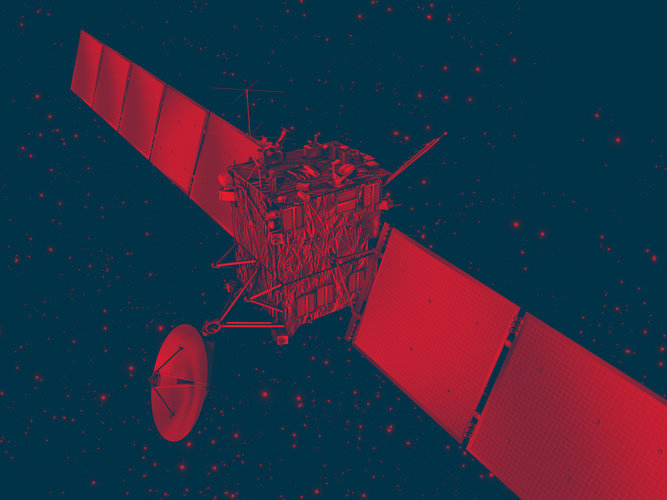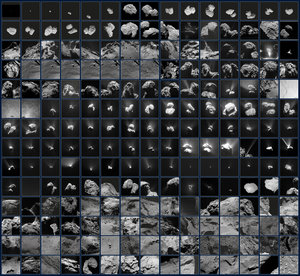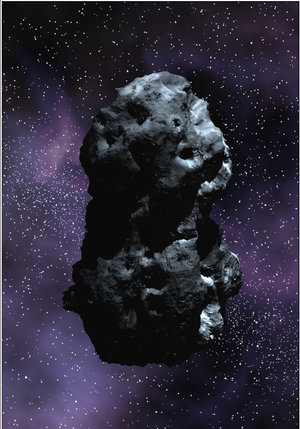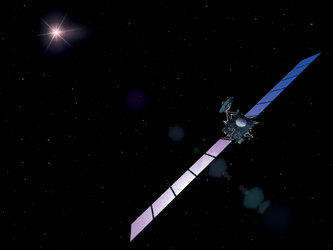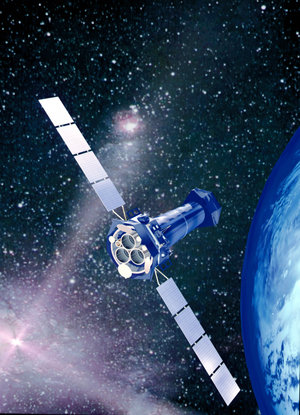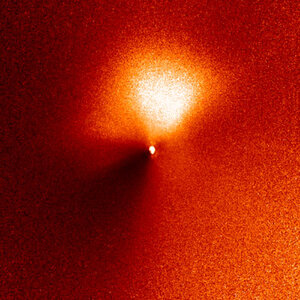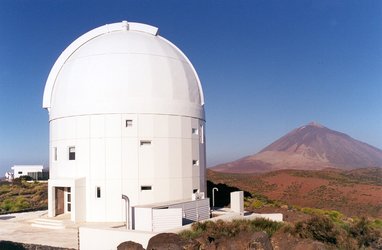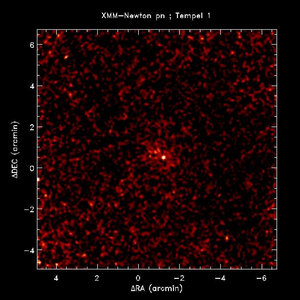ESA’s new camera follows disintegration of a comet
The continuing disintegration of Comet 73P/Schwassmann-Wachmann 3 has allowed ESA scientists to see into the interior of the comet. Using a revolutionary camera attached to the ESA Optical Ground Station on Tenerife, they have followed the detailed twists and turns of various comet fragments.
The superconducting camera, SCAM, is an ultra fast photon counting camera, developed by ESA. It is cooled to just 300 thousandths of a degree above absolute zero. This enables its sensitive electronic detectors, known as superconducting tunnel detectors, to register almost every single photon of light that falls into it. As such, it is the perfect instrument with which to detect fast and faint changes in the fragments of the comet.
Comet 73P/Schwassmann-Wachmann 3 is a short-period comet that approaches the Sun every 5.4 years. Two apparitions ago, in 1996, the comet nucleus split into five pieces (Fragments A, B, C, D, E) of which 3 (B, C, E) were still visible at its 2001 return.
When it approached the Sun again this year, seven fragments were initially observed, indicating that the comet was breaking apart again. Indeed, as astronomers watched, further fragments broke off. Fragment B alone produced at least seven new pieces. At present, about 40 fragments are visible, most of which are likely to be very small and with irregular and short-lived activity.
SCAM was attached to the one-metre ESA Optical Ground Station telescope on 7 May 2006, when the disintegrating comet was observed . Every few microseconds, the camera reads out the number of photons that have touched it and their colour. Using the unprecedented accuracy of the camera, ESA scientists charted the evolution of the dust and gas envelopes associated with each fragment for two hours. Now they must analyse the results.
In particular they will be looking for differences in the size and shape of the fragments and also any colour differences between them that might indicate compositional differences. Other studies are made possible by SCAM’s unrivalled time resolution. Outbursts and activity from each fragment can be traced down to changes that occur on a timescale of one minute. In addition, as the dust and gas particles released from the fragments move with velocities between 0.5 and 1 kilometres per second, the observations will allow the interaction of the gas and dust flow to be studied for the two fragments closest to one another.
Comet 73P/Schwassmann-Wachmann 3 is one of the comets that was considered as a potential target for ESA’s Rosetta mission. In 1995 even before its initial splitting, it was abandoned in favour of comet 46P/Wirtanen. After the launch delay of 2003, ESA decided not to re-select 73P/Schwassmann-Wachmann 3 as the replacement Rosetta target, because of the comet’s volatile behaviour. In 2014, Rosetta will rendezvous and land on the Jupiter-family comet 67P/Churyumov-Gerasimenko.
For more information:
Rita Schulz, ESA – for questions on the comet
Email: Rita.Schulz @ esa.int
Didier Martin, ESA - for questions on the SCAM camera
Email: Didier.Martin @ esa.int
Zoran Sodnik and Christian Erd, ESA - for questions on the OGS optical station
Email: Zoran.Sodnik @ esa.int, Christian.Erd @ esa.int















 Germany
Germany
 Austria
Austria
 Belgium
Belgium
 Denmark
Denmark
 Spain
Spain
 Estonia
Estonia
 Finland
Finland
 France
France
 Greece
Greece
 Hungary
Hungary
 Ireland
Ireland
 Italy
Italy
 Luxembourg
Luxembourg
 Norway
Norway
 The Netherlands
The Netherlands
 Poland
Poland
 Portugal
Portugal
 Czechia
Czechia
 Romania
Romania
 United Kingdom
United Kingdom
 Slovenia
Slovenia
 Sweden
Sweden
 Switzerland
Switzerland


























